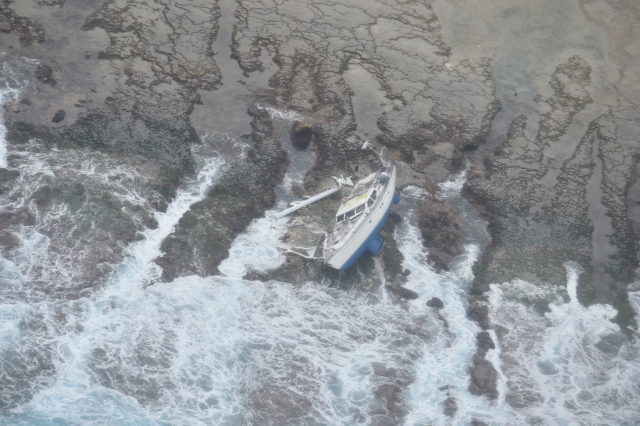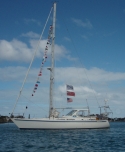The following has been prepared by the RNZAF. It describes the equipment on board the Orion search aircraft and gives advice that better enables them to find boats in distress.
(It was originally written in 1994 by Lt Mike Van Klei, one of the Orion pilots of the Royal New Zealand Airforce involved in searching for boats during the Queens Birthday Storm. I asked the RNZAF to update it as their resources are now much improved. Patricia - Gulf Harbour radio).
We can be directed to within about 10 miles of the source of a 406 beacon. Thereafter the primary search tool is radar which in calm weather will usually pick up a yacht at 40 miles, but in Pacific storm conditions, with high seas, this may be significantly reduced.
With our new direction finding equipment we can home to a 406 Mhz signal. Depending on the strength of the signal we may be able to detect it out to the horizon at search altitudes. We can also detect and home to 121.5/243Mhz signals.
Infra red cameras are often used at night for identification, otherwise search is by visual observation – we will often fire green flares and hope to see a red distress flare in return.
Radio communications are very helpful and we monitor Channel 16 and other SAR frequencies using our VHF/UHF and HF radios during the search. These radios can also be used to canvas to make calls to other vessels in the area to make them aware of the search and, once the yacht is located, to direct them to rendezvous with the survivors to affect a rescue.
The P-3K2 now uses satellite communications systems to remain in constant contact with the tasking authorities in New Zealand. Real-time information and updates can be sent via email during the mission, as well as images, charts and other data. Once such chart plots the probable location of the lost vessel and helps the aircraft mission commander to narrow down the search area and locate the survivors faster. The data flow to the aircraft via satellite communications allows the crew to react and adapt their search tactics and search patterns on the go.
Once the yacht is found we can mark its position with a sonobuoy and/or smoke, drop a life raft or a survival pack and lifejackets, and act as overhead communications platform for the rescue coordination.
It helps us:-
a) To be looking for a colour contrasting with the sea – white is very difficult in rough conditions. Orange is best either on the yacht or using coloured dye markers or smoke. Flares, mirrors or torches also work well in the appropriate conditions.
b) To have a good radar reflective surface which produces a good echo.
c) To be able to communicate on VHF or HF frequencies, even a cellular phone may help.
d) To know what sort of equipment you have on board in detail, e.g. number and type of flares, so the yacht detail departure form should be completed carefully.
e) If crews are familiar with the method of making a radio Mayday call.
f) If your EPIRB goes off inadvertently, please advise someone as quickly as possible to avoid false rescue missions
g) If all yachts continuously monitor Channel 16; we may need you to help others. If we cannot communicate we will show you the direction we wish you to go by a flare or by flying across your bow and then in the direction of a vessel in distress

SV Jungle finds the southernmost reef in Fiji. 2017

SV Jungle as seen from RNZAF Orion. 2017
